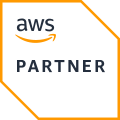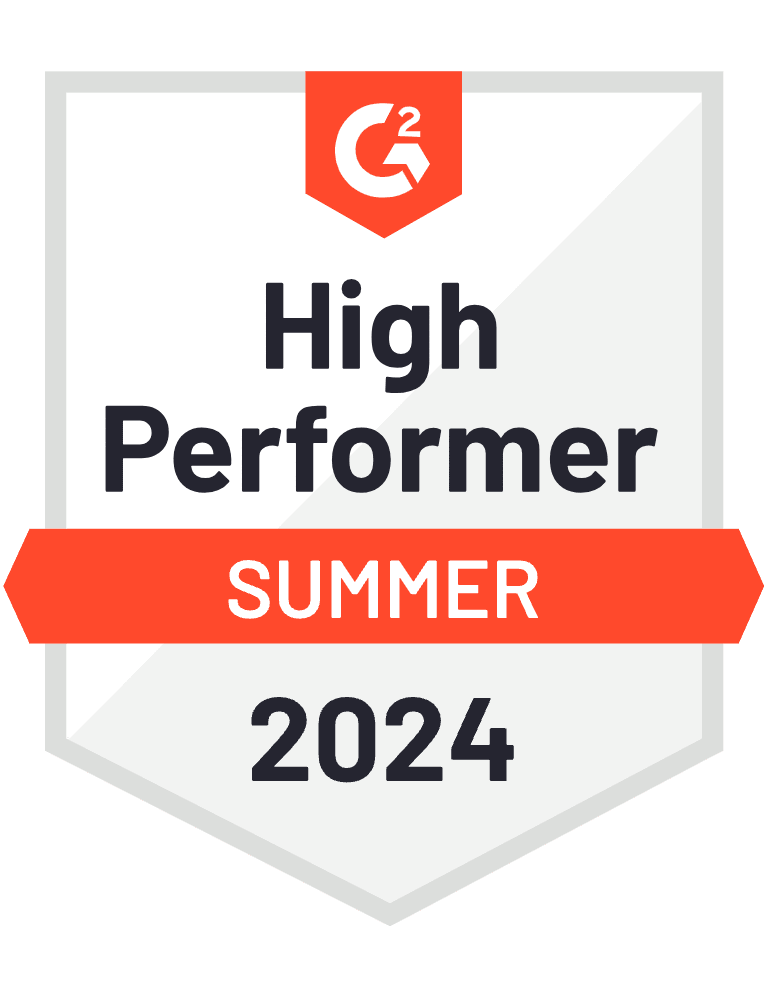Coffee, compliance, and CTOs: the three things essential in keeping startups safe while scaling up quickly. However, without the needed support and guidance to navigate a changing security landscape, one of the three is about to run dry – spoiler alert: it’s not coffee.
For CTOs in the B2B SaaS space, grappling with complex regulatory environments like GDPR, SOC 2, ISO 27001, and HIPAA, while scaling technology infrastructure, is a daily challenge. This complex environment demands a nuanced approach to product architecture, data protection, and infrastructure security that aligns with stringent compliance requirements.
If driving and managing these responsibilities wasn’t enough, CTOs must do these things while balancing the need to be agile and responsive with ensuring the startup integrates security compliance practices like ‘security by design’ and ‘privacy by default’ into their development.
It’s crucial to understand that ‘security by design’ involves anticipating security issues right from the system design phase and embedding robust security protocols into every layer of the technology stack. Similarly, ‘privacy by default’ is not just a regulatory requirement but a strategic approach that ensures customer data is protected by default in every product or service. These concepts are integral to building a sustainable and secure SaaS platform.
Yet, regardless of the hours spent managing it, something can always slip through the cracks.
In this eBook, we’re deep-diving into security compliance for CTOs and how to best manage InfoSec frameworks. This guide will delve into advanced strategies for navigating complex compliance frameworks, implementing robust security measures, and maintaining operational agility. We’ll dissect the intricacies of adhering to key regulations and standards and explore how to embed these practices into your R&D and operational processes.
But first, let’s cover the basics.
What is Security Compliance?
As a CTO, you’re already familiar with the concept of security compliance and the need for it to be an essential part of your business. However, in a fast-paced security environment that’s quick to change, it’s crucial to ensure you’re always on the right track.
In a nutshell, security compliance is about taking active steps to protect your assets and data, and meeting security and regulatory compliance. This goes beyond mere adherence to laws and regulations; it requires a strategic approach to integrating security into every aspect of your business operations and software development life cycle (SDLC). This involves putting policies, procedures, and controls in place to mitigate the risks from threats, both internal and external, to your company’s data, systems, and business.
Security compliance can be achieved through the implementation and management of a security program aligned with industry-recognized frameworks such as ISO 27001 or SOC 2. These frameworks have set controls, requirements, and guidelines for building and managing a robust security program to protect your organization from the ever-expanding threat landscape. Specifically, ISO 27001 focuses on establishing and maintaining an information security management system (ISMS), while SOC 2 is tailored towards service organizations, emphasizing the security, availability, processing integrity, confidentiality, and privacy of customer data.
It is important to recognize that compliance with these frameworks is not a ‘set it and forget it’ checkbox type of exercise. It involves regular reviews, audits, and a commitment to continuous improvement. This includes regular risk assessments, updating policies in response to new threats or changes in the business, and ensuring that all staff are trained and aware of their role in maintaining security.
Easier said than done, of course.
What Does Compliance Mean to a SaaS Product Architecture?
Compliance in the context of SaaS encompasses various aspects of design and operation. It means ensuring that the software architecture adheres to relevant legal, regulatory, and security standards specific to the industry and regions in which the service operates. This includes data protection laws (like GDPR or HIPAA), accessibility standards, and industry-specific security frameworks. For a SaaS product, compliance influences how data is stored, processed, and transmitted, requiring robust security measures like encryption and secure authentication. It also dictates data residency requirements and impacts the architecture’s scalability and flexibility to adapt to changing regulations. Furthermore, compliance involves regular audits and updates to meet evolving standards, necessitating a design that can adapt and integrate these changes seamlessly. For architects and developers, this means building a system that not only meets current functional requirements but is also equipped to handle future compliance needs efficiently.
The Role of CTOs in Security Compliance at Their Organizations
Security frameworks can seem to be overwhelming to implement for even the most experienced CTO.This is especially true in the B2B SaaS context, where the rapid pace of software development and the complexity of cloud-based service models add additional layers of security considerations. Determining which controls, guidelines, requirements, and best practices to implement for your organization is a time-consuming exercise. CTOs must collaborate with multiple other departments to determine how they perform their function, including which systems and applications they may use and the sensitivity of the data they have access to, and then design a robust security program that balances protecting the organization with the same program not placing too big a burden on staff and business operations.
The role of a CTO in this process is not only strategic but also technical, requiring a deep understanding of various security domains such as network security, application security, and data encryption. However, the controls and requirements within these security frameworks are simply the ‘what’ you must do, leaving the ‘how’ to you.
A CTO’s role in security compliance highly depends on the company size and structure, industry, location, products and services, and specific framework they’ve implemented. However, a few high-level responsibilities apply to security compliance for most leading security standards. These include:
- Creating, implementing, and enforcing company security policies and procedures
- Risk identification, assessment and mitigation
- Management of your information security program
- Monitoring and incident response
- Overseeing the employee security training and awareness program
- Asset protection
- Secure software development lifecycle
- Data protection
Moreover, in a SaaS startup, the CTO must ensure that the security practices are integrated seamlessly into the SDLC, requiring a proactive approach to security in the development process itself.
All of these responsibilities require consistent oversight. In the fast-paced environment of a startup, it is easy for CTOs to either get bogged down in the details of managing the compliance program or, because their attention is divided among multiple projects, miss a red flag that indicates your organization has a serious security problem putting you at risk.
The Top Security Challenges for CTOs
Compliance is fleeting if not constantly monitored, tracked, updated, and tested. To be a great CTO, you must be adept in identifying and adapting to new and evolving opportunities (and challenges). However, some of the most significant challenges within the cybersecurity scope are harder to shake than others.
Managing Complex Compliance Requirements
With evolving global data protection laws like GDPR, CCPA, and industry-specific regulations, ensuring compliance is becoming increasingly complex. As a CTO, you need to navigate these regulations while aligning them with your business model and technology infrastructure.
Unconsolidated Products and Services
Today, many organizations utilize SaaS products and services to manage their compliance program. This often leads to a complex ecosystem of interdependent services, each with its own set of security protocols and compliance standards. It is not always possible to consolidate these services, leaving your organization open to data and access privilege risks. CTOs must be vigilant when using these products and services to ensure that they are compatible with the company’s structure, systems, and mission, and are compliant with industry standards.
Time and Resources
A key challenge for a CTO in managing security compliance processes, such as SOC 2, ISO 27001, GDPR, PCI-DSS, and HIPAA, is the significant investment of time and resources. Compliance activities require continuous monitoring of controls, frequent updates to security policies and systems, correct implementation of controls and of course, ensuring all audit requirements are attained to achieve and maintain compliance.
Firstly, the time commitment can be substantial. For instance, preparing for a SOC 2 audit involves in-depth reviews of current security practices, implementing new controls, and much more. Similarly, adhering to GDPR requires ongoing management of data processing and protection activities, which can be intricate and time-intensive.
Accurately Monitoring and Measuring Security Posture
Complacency is a compliance program killer. As CTO, you must be sure that all the effort and costs that went into implementing your compliance program isn’t wasted. This includes leveraging advanced cybersecurity metrics and KPIs to track the effectiveness of your security measures. It’s one thing to become compliant, but remaining compliant is just as, if not more, important. Compliance requires active participation from the entire organization, from the CTO down. This means ensuring the organization has the tools and solutions in place that allow them to monitor and measure their security posture accurately while being flexible enough to identify and mitigate new and emerging vulnerabilities and threats. Additionally, integrating automated security tools and AI-driven threat detection systems can significantly enhance the ability to respond to evolving threats in real-time. These tools must also be able to measure what is important to your business.
Compliance Frameworks and Overcoming Common Challenges
Organizations across all industries can no longer afford to be complacent about their security. The number of threats is ever increasing and no business is safe from attack, no matter how small. In the SaaS domain, where customer data is often stored and processed on the cloud, the stakes are even higher. This is why your security program must be based on an internationally recognized security standard such as ISO 27001 or SOC 2. As mentioned, ISO 27001 focuses on establishing a comprehensive information security management system (ISMS), while SOC 2 is designed to ensure the security, availability, processing integrity, confidentiality, and privacy of customer data in SaaS companies. Organizations that implement security programs that meet these standards are recognized as putting security first, an invaluable advantage in any market.
As CTO, understanding the risks to your systems, data, assets, and business operations will allow you to use these frameworks to identify and implement the controls applicable to your business. This involves conducting thorough risk assessments and aligning them with the control objectives outlined in these frameworks. You also need to consider the specific challenges of a SaaS environment, such as multi-tenancy, continuous delivery, and dependency on third-party services. These frameworks also provide requirements, guidance, and best practices on staying compliant, such as regular reviews of policies and procedures, internal and external audits, and testing of your incident response procedures.
It’s also important to understand that compliance is not a one-size-fits-all solution; customization of these frameworks to fit your specific organizational context is crucial. This may involve selecting and prioritizing certain controls over others, based on your business model, data flow, and technology stack.
Basic market research can show you which framework is most common in your industry and which of your competitors may be compliance-certified. Understanding the importance, and advantage of, compliance certification within your industry will help you build a business case with investors in building out your security program to address any significant gaps and weaknesses.
The Main Compliance Focus When It Comes To The SDLC
The main compliance focus in the Software Development Life Cycle (SDLC) revolves around ensuring that the software development process adheres to both internal and external regulatory standards and best practices. This involves integrating compliance measures at every stage of the SDLC, from planning and requirements gathering to design, development, testing, and deployment.
For CTOs, the key is to establish a compliance-first mindset within their teams. This includes incorporating security protocols, data privacy laws (like GDPR or HIPAA, depending on your industry), and accessibility standards throughout the development process. Regular compliance audits and reviews should be integrated to ensure that the software not only meets the functional requirements but also complies with industry standards and legal requirements.
Moreover, with the increasing importance of Agile and DevOps in accelerating the SDLC, CTOs must ensure that these methodologies include compliance checks at each iteration. This approach helps in identifying and mitigating compliance risks early in the development cycle, reducing the cost and effort required for compliance-related modifications in later stages.
Lastly, training and awareness are crucial. Ensuring that all team members, from developers to QA engineers, are aware of the compliance requirements and understand their role in maintaining them, is essential for a compliance-focused SDLC. This strategic approach to compliance in the SDLC not only protects the organization from legal and financial repercussions but also enhances the trust and reliability of its software products in the market.
Least privilege and segregation of duties for production environment and sensitive data
CTOs should be acutely aware of the principles of least privilege and segregation of duties, especially in the context of production environments and handling sensitive data.
The least privilege principle dictates that users and systems should have only the minimum level of access necessary to perform their functions. This approach significantly reduces the risk surface, as it limits the potential damage from security breaches or insider threats.
Segregation of duties, on the other hand, involves dividing critical tasks and privileges among multiple users or systems. This division ensures that no single entity has complete control over key processes, thereby mitigating the risk of fraud and errors. In production environments and when handling sensitive data, applying these principles rigorously helps in maintaining data integrity, ensuring compliance with various regulatory standards, and safeguarding against data breaches. CTOs should ensure these principles are deeply embedded in their security policies, access controls, and organizational culture.
SOC 2 and ISO 27001: What’s The Difference?
Choosing which framework is better is sort of like choosing which is your favorite child. Each of these frameworks has its strengths and weaknesses when looked at in the context of your particular business. Which framework suits you best is dependent on what your business does, what the structure and context of your organization is, and, just as important, what your customers require.
There is no favorite when comparing SOC 2 and ISO 27001. Now, although this can easily sound like the stereotypical cop-out when avoiding picking a side (you’re both special in your unique way) – hear us out because staying objective is key here.
Compared to ISO 27001, SOC 2 follows a more flexible and customizable approach. SOC 2 is based on the five Trust Service Principles (‘TSP’), organizations can choose the principles that apply to their specific business from security, availability, confidentiality, processing integrity, and privacy.For SaaS companies, these principles are particularly relevant, as they address the security and privacy concerns inherent in cloud computing. Security is a must, all others depend on the nature of the business. SOC 2 is especially popular among U.S. companies, particularly those that handle customer data, as it aligns closely with American privacy and data security practices.
This differs from ISO 27001, although it does allow some customization through the Statement of Applicability, allowing companies to establish an Information Security Management System (ISMS) according to specific requirements. ISO 27001 is a global standard, widely recognized and respected internationally. It’s comprehensive in its approach, covering not just IT but all aspects of business information risk management.
Another important differentiator is that SOC 2 is not considered a certification, as with ISO 27001. Instead, a SOC 2 report is an attestation given by an independent auditor assessing the effectiveness of your controls. There are two types of SOC 2 reports. SOC 2, Type 1 is an initial evaluation that your organization has all of the appropriate controls in place. SOC 2 Type 2 is an evaluation of how your controls and compliance program operates over a period of time. The ISO 27001 certification process is similar. In an ISO 27001 certification, the Phase 1 audit, or ‘paperwork audit’, reviews your program design and implementation. The difference between the two standards is that ISO 27001 certification is not granted until your organization passes the Phase 2 audit, which is typically 12 months after passing the Phase 1 audit.
Regardless of which framework your organization needs to implement, the overall success hinges on an organization’s ability to implement and manage it effectively. Here’s what you need to know to best implement and manage consistent compliance for SOC 2 and ISO 27001.
SOC 2 Compliance for CTOs
SOC 2 (Service Organization Controls 2) is based on the five “Trust Services Criteria”; Security, Availability, Processing Integrity, Confidentiality, and Privacy. This specific framework includes a set of compliance requirements primarily geared toward technology-based companies that need to secure and manage a cloud-based security landscape. It’s particularly relevant for B2B SaaS companies as they handle sensitive customer data within cloud infrastructures, making the adherence to these principles critical for ensuring data security and building customer trust.
In terms of compliance, as it’s an attestation, organizations must undergo a strict audit process to specify how exactly the organization manages internal controls and protects customer data. This involves a comprehensive review of your policies, procedures, and systems to ensure they align with the selected Trust Service Criteria. The audit can be conducted for SOC 2 Type 1 (evaluating the design of controls at a specific point in time) or SOC 2 Type 2 (assessing the operational effectiveness of these controls over a period, usually a minimum of six months).
How Can SOC 2 Impact the CI/CD Pipeline?
SOC 2 compliance can significantly impact the Continuous Integration/Continuous Deployment (CI/CD) pipeline, primarily by introducing strict controls and processes designed to enhance security and reliability. Let’s break it down:
Security Controls: SOC 2 requires robust security measures, which means integrating security tools and practices directly into the CI/CD pipeline. This includes tools for static and dynamic code analysis, vulnerability scanning, and automated security testing. These tools must be configured to run automatically during the build and deployment processes.
Change Management: SOC 2 emphasizes controlled change management. Therefore, every change in the CI/CD pipeline, from code commits to configuration changes, must be tracked and documented. This may necessitate additional steps or tools for tracking and reviewing changes.
Documentation and Traceability: SOC 2 mandates thorough documentation of processes and controls. In the context of CI/CD, this means maintaining detailed records of deployments, including who approved them, the testing that was conducted, and any issues that were identified and resolved.
Access Controls: Implementing strict access controls is a key aspect of SOC 2. In CI/CD pipelines, this could mean more stringent controls over who can push code, who can approve merges, and who can deploy to production environments.
Audit Trails: SOC 2 requires creating and maintaining audit trails. For CI/CD, this involves logging all activities, including code commits, builds, tests, and deployments, and ensuring these logs are secure and tamper-proof.
Testing and Quality Assurance: SOC 2’s focus on the reliability of systems means that testing and quality assurance become more critical in the CI/CD pipeline. Automated testing must be thorough, and there might be additional requirements for manual testing and quality checks.
Incident Management: SOC 2 requires processes for identifying, responding to, and managing incidents. This impacts CI/CD in terms of how quickly and effectively incidents (like deployment failures or security breaches) are handled.
Continuous Monitoring: Finally, continuous monitoring for security and performance issues is integral to SOC 2. This means integrating monitoring tools into the CI/CD pipeline to continuously scan for and alert on potential issues.
Overall, while SOC 2 can add complexity to the CI/CD pipeline, it ultimately leads to more secure and reliable software development and deployment practices.
A Few Tips on Preparing for the SOC 2 Audit Process and Managing Compliance
Understand SOC 2 Requirements: Familiarize yourself with the Trust Service Criteria of SOC 2 – Security, Availability, Processing Integrity, Confidentiality, and Privacy. Determine which of these criteria are relevant to your service offerings.
Conduct a Gap Analysis: Perform an initial gap analysis to assess your current controls against SOC 2 requirements. This helps in identifying areas that need improvement or development before the audit.
Develop or Enhance Policies and Procedures: Based on the gap analysis, create or update your organization’s policies and procedures. Ensure these policies are comprehensive and reflect your operational practices, specifically those related to data protection, network security, and incident response.
Implement Required Controls: Establish and implement the necessary controls to address the identified gaps. In a SaaS environment, focus on areas like data encryption, access control, network security, and application security.
Train Your Staff: Educate your employees about SOC 2 requirements and the importance of compliance. Ensure that they understand their role in maintaining security and privacy as per the SOC 2 criteria.
Engage an Experienced Auditor Early: Partner with an auditor who has expertise in SOC 2 audits, preferably one with experience in the SaaS industry. Their early involvement can provide valuable insights and guidance throughout the preparation process.
Prepare Documentation: Organize all relevant documentation that demonstrates your compliance with SOC 2. This includes policies, procedures, system architecture diagrams, and records of implemented controls.
Establish Continuous Monitoring Mechanisms: Implement continuous monitoring tools to track the effectiveness of your controls. Regularly review these metrics to ensure ongoing compliance and identify areas for improvement.
Run a Pre-Audit Assessment: Conduct an internal pre-audit assessment or a readiness assessment with the help of your auditor. This can help in identifying any last-minute gaps or issues that need to be addressed.
Ensure Vendor Compliance: If you rely on third-party vendors, ensure they also adhere to SOC 2 requirements, especially those handling sensitive data or critical operations.
Regularly Review and Test Incident Response Plans: Ensure that your incident response plans are up-to-date and regularly tested. This is crucial for demonstrating your ability to effectively handle and mitigate security incidents.
Prepare for the Audit: Organize all the evidence of your compliance efforts. Ensure key team members are prepared and available to provide information and respond to the auditor’s inquiries during the audit process.
Address Audit Findings Diligently: After the audit, address any findings or recommendations from the auditor promptly. Develop a plan to correct any deficiencies and prevent them from recurring.
Plan for Continuous Improvement: SOC 2 is not a one-time certification but an ongoing commitment. Continuously improve your control environment in response to changes in technology, business operations, and emerging threats.
ISO 27001 Certification for CTOs
We can’t start the deep-diving process without a proper introduction, especially for one of the leading global data security protocols. ISO 27001 is a comprehensive security standard that considers personnel, policies, systems, and technologies to gauge an organization’s security posture. It follows a risk-based approach and is a highly effective way to assess and correct data security risks across the organization. This standard is particularly important for SaaS startups as it helps establish trust with customers and stakeholders by demonstrating a commitment to data security and privacy.
To become ISO 27001 certified (yes, this one’s a certification), a company must develop an appropriate Information Security Management System (ISMS) and undergo an independent audit.
Developing an ISMS under ISO 27001 is not just about implementing a set of controls; it’s about establishing a systematic and proactive approach to managing information security risks. For a SaaS startup, this includes specific considerations like securing application interfaces, managing data encryption, and ensuring secure cloud storage.
An Information Security Management System (ISMS) includes all your policies, procedures and controls for systematically managing the risks to your organization’s systems, data, and people that are identified in your risk assessment. The identified risks will help you select the controls within Annex A of the standard that you’ll need to implement. According to ISO 27001: 2022, Annex A contains 93 controls across 4 families (People, Organizational, Technological and Physical). It’s crucial to tailor these controls to the specific needs and risks of your SaaS startup. These are documented in a Statement of Applicability, where you identify the controls you are implementing or not, and the reasons for the decision. Once you’ve completed this, you can begin to build your ISMS to manage the program you have created.
Remember, the ISMS is an ongoing process. It requires continuous monitoring, review, maintenance, and improvement, ensuring it evolves with the changing threat landscape and business environment.
How Can ISO 27001 Impact the CI/CD Pipeline?
ISO 27001 can significantly impact the Continuous Integration/Continuous Deployment (CI/CD) pipeline in various ways:
Security Integration: ISO 27001 emphasizes integrating security measures into every aspect of an organization’s processes. In the context of a CI/CD pipeline, this means incorporating security checks and controls at each stage of software development and deployment. Tools like static and dynamic code analysis, container scanning, and automated security testing become integral parts of the pipeline.
Documentation and Traceability: ISO 27001 requires thorough documentation of processes and controls. For CI/CD, this translates to detailed logging and recording of every change, build, and deployment, ensuring traceability and accountability in the development process.
Access Control: The standard mandates strict access control measures. In CI/CD pipelines, this involves restricting access to code repositories, build servers, and deployment environments, ensuring that only authorized personnel can make changes or deploy code, in line with the principle of least privilege.
Risk Assessment and Management: ISO 27001 focuses heavily on identifying and managing risks. For CI/CD, this means continuously assessing the pipeline for vulnerabilities, such as dependency flaws or insecure coding practices, and implementing measures to mitigate these risks.
Change Management: The standard requires robust change management processes. In CI/CD pipelines, every change in the code, infrastructure, or configuration should go through a standardized process, ensuring that changes do not introduce new security vulnerabilities.
Incident Management: ISO 27001 requires processes for managing and responding to security incidents. In CI/CD contexts, this could involve immediate rollback mechanisms for deployments that introduce security issues, along with processes for quickly patching and redeploying fixed versions.
Continuous Improvement: A key aspect of ISO 27001 is the emphasis on continuous improvement. This aligns well with the CI/CD philosophy, encouraging regular updates to the pipeline to enhance security, efficiency, and compliance with evolving standards.
In essence, adhering to ISO 27001 can lead to a more secure, transparent, and robust CI/CD pipeline, aligning software development practices with top-tier information security standards.
Practical Tips for ISO 27001 Specifically for CTOs in the B2B SaaS Startup Space
Understand the Standard: Familiarize yourself thoroughly with the ISO 27001 standard. Focus on understanding the requirements of Annex A controls and how they apply to your organization’s technology, processes, and data handling practices.
Conduct a Detailed Risk Assessment: Perform a comprehensive risk assessment to identify potential security threats and vulnerabilities within your organization. This should cover all aspects of your operations, including software development, data storage, and third-party integrations.
Develop a Robust ISMS: Design and implement an Information Security Management System (ISMS) that addresses the identified risks. Ensure that your ISMS is aligned with your business objectives and technology architecture.
Document Policies and Procedures: Create clear, concise, and comprehensive documentation of your security policies and procedures. Ensure that these documents are easily accessible to relevant staff and are regularly updated to reflect changes in your operations or the threat landscape.
Implement Necessary Controls: Based on your risk assessment, implement the necessary security controls from Annex A of ISO 27001. In a SaaS environment, pay particular attention to application security, data encryption, incident response, and access control.
Ensure Staff Training and Awareness: Conduct regular training sessions for your staff to ensure they are aware of the security policies and their individual responsibilities. Emphasize the importance of security in their day-to-day roles, especially for teams involved in development, operations, and customer support.
Establish Continuous Monitoring and Improvement Processes: Set up processes for continuous monitoring of your ISMS. Use metrics and KPIs to measure its effectiveness and make improvements as necessary. Regularly review your security measures and update them in response to new threats or changes in your business environment.
Conduct Internal Audits: Before the external audit, carry out internal audits to test the effectiveness of your ISMS. This will help identify any areas that need improvement and allow you to address them before the formal audit.
Choose a Reputable Auditor: Select an experienced and reputable auditor with expertise in auditing SaaS companies. Their insights can be invaluable in ensuring your ISMS meets the requirements of ISO 27001.
Prepare for the Audit: Organize all your documentation and evidence of compliance. Ensure key personnel are available to answer the auditor’s questions and provide any necessary information during the audit process.
Address Audit Findings Promptly: After the audit, promptly address any findings or non-conformities identified by the auditor. Develop a plan to rectify these issues and prevent them from recurring in the future.
Plan for Regular Review and Updates: Remember that ISO 27001 compliance is not a one-time event but a continuous process. Regularly review and update your ISMS to ensure ongoing compliance and adapt to new security challenges.
Automation and Security Compliance: Is It Worth It?
As the scope of cyber threats snowballs, day-to-day tasks, and responsibilities start piling up, and security framework requirements are constantly updating – compliance can feel like a constant race against time. Feeling anxious?
This is why many CTOs have gravitated towards implementing automated compliance solutions to help them track and manage their security posture and compliance. At the very crux of compliance automation, technology replaces tasks that previously required strenuous manual labor. This includes automating routine compliance checks, reporting, and even certain aspects of threat detection and response. Moreso, through efficiency and effectiveness, all these previously manual processes and systems are precise, consistent, and up to date with the most recent changes regarding security standards.
However, if you’re handing over some of your priority tasks to a platform, you will want to be sure of how (and why) it works and how it impacts your specific role in compliance. Overcoming this trust barrier is one of the key reasons some CTOs have yet to implement automation.
Will it replace some of the core responsibilities that CTOs are frequently tasked with? On the other hand, could it perhaps add more to your plate? Here’s what you need to know about how automation is transforming compliance management for CTOs.
- Automated Evidence Collection – Automating your compliance ensures that critical evidence (logs, configuration settings, etc.) are automatically collected and updated as changes occur. This streamlines the process of maintaining an audit trail and ensuring accountability.
- Identification of Non-Compliance in Real Time – Automated compliance allows an organization to identify non-compliance issues in real time so they can be immediately corrected. This proactive approach is crucial in a dynamic regulatory environment where timely response is key to maintaining compliance
- Single Source of Truth for All Documentation – Automated compliance ensures that all the documentation is in a single repository. This centralization simplifies the process of managing and updating compliance documents, making it easier to maintain consistency and ensure all stakeholders have access to the latest information.
- Streamlined Collaboration – Automated compliance provides the ability to create workflows for everything from document reviews to change management. This can significantly enhance the efficiency of cross-departmental collaboration, ensuring everyone is aligned and contributing to the compliance process.
- Automated User Access Review – User access reviews can be time consuming and burdensome. Automated compliance makes user access review a breeze by maintaining a living database of users, roles, and assigned access permissions. This not only saves time but also enhances security by ensuring that access rights are always current and appropriate to each user’s role
Automation Makes Staying Compliant Simpler
Startup CTOs have enough on their plate, and manually monitoring compliance can take them away from other critical responsibilities during scaleup. By automating your compliance monitoring, you, as CTO, can free up your schedule and give your key responsibilities the attention they need.
It’s also worth noting that while automation significantly aids in compliance, it doesn’t entirely replace the need for human oversight. CTOs should ensure that automated systems are regularly reviewed and updated to reflect the latest compliance requirements and business changes.
With Scytale, automating your compliance also gives you access to security compliance experts that feel like you have an entire compliance team on staff to help you make sure your organization not only achieves compliance swiftly, but maintains compliance.
As a CTO, you know what you’re doing and what your vital objectives are; however, in the intricate and complex world of security compliance, it’s critical to enhance your understanding of specific controls and framework requirements, especially considering that standards are prone to change, easily misinterpreted and challenging to apply to particular niche industries. Automation tools like Scytale can provide valuable support in this regard, but they should be seen as part of a larger strategy that includes ongoing education, policy development, and risk management.
Scytale puts experts in your corner to ensure that you’re up to date and that nothing slips through the cracks.
Manage Security Compliance with Confidence
Ultimately, the best way to ensure consistent compliance is to know you don’t have to take on the mammoth task alone. The world of compliance is complex, isolating, and sets even the top CTOs up for failure without the needed guidance and support.
It’s essential to have a strategic approach to compliance, which involves understanding the specific requirements of frameworks like SOC 2 and ISO 27001, and how they apply to your unique business context. This includes staying updated on the latest changes in compliance standards and best practices.
Rather than relying on trial and error, consider using the right tool that can streamline and simplify the compliance process. Utilizing a comprehensive compliance management platform can significantly accelerate your path to compliance. We offer a fully automated compliance solution consolidating everything you need to manage your SOC 2 and/or ISO 27001 compliance in one centralized platform. This can help in reducing the likelihood of errors, minimizing risk exposure, and alleviating the stress associated with compliance tasks.
Utilizing a platform like Scytale can provide a more streamlined and efficient approach to managing compliance, allowing you to focus on other critical aspects of your role as a CTO.





